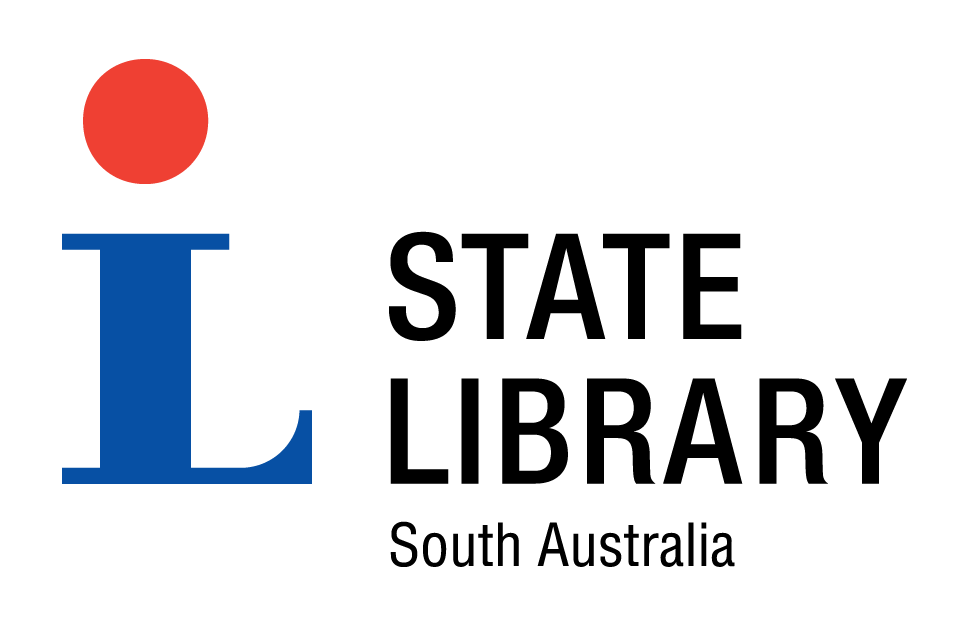
Taking it to the edge: South Australia's polar pioneers: Rymill
Early years
John Rymill was born in March 1905 at Penola and educated in Adelaide and Melbourne. From boyhood Rymill wanted to be a Polar explorer and in 1927 he went to England where he began to prepare himself for his chosen vocation. He studied surveying and navigation at the Royal Geographical Society, anthropology at London University, skiing and snow conditions in the European Alps and Norway. He qualified to fly with De Haviland and also worked at the Scott Polar Research Institute. All of this determined concentration on his life goal soon found an opening, when in 1929 he joined Cambridge University's Museum of Anthropology and Ethnology Expedition to Northern Canada. On his return he joined the British Arctic Air Route Expedition under Gino Watkins.
Greenland
The main purpose of this expedition was to survey the least-known part of Greenland; which would be a section of the great circle air route from London to Winnipeg. The area of Greenland to be examined was the east coast for 200 miles north of Angmagssalik to Scoresby Sound and the interior, which was almost entirely unknown. The expedition would also record the meteorological conditions on the coast and the ice cap over a period of a year.
Aerial photography complemented the coastal survey. From a base established 35 miles west of Angmagssalik, and a base some 140 miles inland meteorological conditions were recorded throughout the winter. The interior was explored using dog sledges and two crossings of the ice cap to determine conditions in the interior were made, including one by Rymill and a companion. His crossing from the base at Angmagssalik to Holsteinberg on the west coast of Greenland, a distance of 450 miles was plagued with difficulties. Rymill and Hampton left base camp on August 12, 1931, taking with them two kayaks mounted on sledges. It was planned to use these for the last 100 miles of the journey which would be down a long fjord. Finally the west coast was reached on October 4, after a journey of 65 days, much longer than expected. On one occasion Rymill was swept under the ice in his kayak, emerging after some little distance, fortunately unhurt.
Rymill's ability as an aircraft mechanic was also proven on this expedition, working in difficult conditions with few spare parts and making a new tail plane and elevator spar from driftwood.
He returned to Greenland with Gino Watkins in 1932-33. This expedition was sponsored by Pan American Airways and was to complete the meteorological and survey work of the previous expedition. Watkins was drowned while hunting seal and Rymill assumed the leadership, completing the work of the expedition.
The skills in surviving the Arctic which the Eskimo people (Inuit) of East Greenland had taught Watkins' men including dog-sledging and kayaking, and the willingness of the women to make appropriate clothing for them, was an important aspect of the success of these expeditions. This debt was fully acknowledged in the account of the expedition Northern Lights.
British Graham Land Expedition
'Rymill has started a new style of Antarctic exploration, less ambitious than the expeditions of the past, working at shorter range and more exhaustively and concentrating on certain definite problems'
JM Wordie in Geographical Journal vol. 91 part 5 May 1938 page 436
Rymill now began planning an Antarctic expedition. The British Graham Land Expedition (BGLE) of 1934-37 was developed on a modest scale. Rymill proposed to explore and accurately survey South Graham Land - a little known extension of Antarctica, reaching northwards towards Cape Horn. It was intended to explore the area which Hubert Wilkins had flown over in 1928. He was joined on this expedition by a number of his companions from Greenland. The expedition was funded by the Colonial Office, the Royal Geographical Society and private donors. His ship a French three masted topsail fishing schooner was renamed Penola after his home town. The dogs were selected from both Greenland and Labrador stock - with the experience gained on two expeditions in Greenland, Rymill and his men knew that the breeds had different qualities that would be useful in different situations. In the end however, following the loss of 50% of their animals to disease, the teams consisted largely of dogs bred in the Antarctic during the course of the expedition.
Following on from the methods established in Greenland, coastal surveys by motorboat were supported by aerial photography. The Fox Moth aircraft also helped to establish advance bases, to reconnoitre ice conditions and search for possible harbours. With this knowledge Rymill could work out future plans. He was never reluctant to adapt his plans if the conditions warranted it.
The early work of the BGLE established that the reports of previous explorers about the land/sea/ice distribution to the south were inaccurate and so it was decided to explore it more thoroughly. A base was established in the Argentine Islands and from here they planned to sledge down the west coast of the peninsula to examine Wilkins's islands and channels. Their initial sledging enabled some tidying up of the existing maps.Their survey work was rigorously methodical: every 48 to 80 kilometres astronomical fixes were made and the intermediate detail was completed with plane-table and compass traverses, and the distances measured by sledge-wheel. Scientific work continued at the main base while the field surveys were undertaken: this included zoology, geology, ornithology and meteorology-fossil plants and shells were discovered. The base was then moved further south, which necessitated a new hut being built as the original one was so well built it could not be taken apart. Timber was obtained from an abandoned whaling station on Deception Island. The new base was in Marguerite Bay.
Disproving Wilkins' discoveries
Lincoln Ellsworth in November 1935, made a magnificent flight from Dundee Island to the Bay of Whales, and should have crossed the country somewhere to the south of the position which Stephenson and Hampton of the BGLE reached while flying on March 13. While Ellsworth had been in western Antarctica, Rymill's team was in daily wireless communication with his ship the Wyatt Earp, and from the messages which they had received from her and also from those picked up from his aeroplane, they understood that he had confirmed Wilkins' Stefansson Strait and the existence of Hearst Land. Rymill telegraphed his agent, JM Scott, in London, asking him if he could advise any details of Ellsworth's discoveries, and received a telegram from him saying: "Ellsworth confirms Stefansson Strait but says it is only about 3 miles wide." Stephenson and Hampton had seen large mountain ranges extending far to the south beyond Marguerite Bay, so where Stefansson Strait fitted in was difficult to conceive.
By this time, judging from their own experiences in the air, and from what they had already discovered to be wrong in previous reports, they were naturally very sceptical of information brought back from hurried single flights without any kind of ground control. Even so, it was extremely difficult to disregard totally the reports of two well-known airmen like Sir Hubert Wilkins and Lincoln Ellsworth when drawing their own conclusions. It was obvious that they should have to make an aerial reconnaissance down the channel before further plans were developed. Ground control and survey was essential as would be proven consistently in the year ahead.
The first flight revealed great differences from Wilkins's observations and also revealed that there was no possibility of cutting through to the east side of the peninsula to the Weddell Sea. More flights were needed. In mid-August a flight revealed that what was considered a rift was in fact a strait. The northern side of Alexander I Land was seen to be heavily glaciated and too risky to sledge over. Plans were adapted. The next flight determined the southern end of Alexander I Land - in fact it is an island - and the extent of the strait seen on the previous flight. Two parties of five sledges headed out in early September. As a result of the early start they were plagued with misty conditions and enforced rest days. Again Rymill changed the plans: to enable one group to get as far south as possible he and another would return to the base: their supplies would be shared with the southbound team and a depot of food established for their return. Extra rations and dog food would be flown down once he reached base. First Wilkins' Casey Channel, and then Lurabee Channel were shown not to exist, with the new strait the BGLE had discovered continuing with an unbroken eastern coastline. While the team's geologist fossicked, the surveyor would do a full survey with solar observations and theodolite angles. This team continued down the strait until the land at the end veered to the west joining seamlessly with the main continent: the strait was named King George VI Sound. Wilkins's Stefansson Strait was disproved.
Traverse of the peninsula
Meanwhile Rymill and Bingham made a traverse of the Peninsula, and its central ridge of mountains to over 9000 feet. It was impossible to descend to the Weddell Sea-there were more mountains with a steep eastern face of rocky ridges cleaved with heavily crevassed glaciers. They travelled south at an altitude of about 3000 feet, beyond them the mountains rose higher. They eventually turned back in the direction of the base and investigated the eastern end of the supposed Casey Channel. There was a rift and a glacier, but no channel.
The BGLE ended with several flights which joined up their northern and southern surveys to everyone's satisfaction. They were also able to assess the condition of the sea ice and radio instructions to Penola to come south to collect them. Photographs taken by Bingham while on the cross-country climb with Rymill were later able to be correlated with photos taken by Ellsworth; they could then pinpoint the 'geographical coordinates of that portion of Ellsworth's flight' and were able then to identify other Ellsworth photographs and plot part of his route. This was significant in proving the peninsularity of Graham Land, rather than its perceived insularity.
The results of the BGLE were outstanding. Concentrating their efforts in a relatively small area, Rymill and his men changed the face of Antarctica. The expedition proved the value of aerial survey backed by accurate ground reconnaissance. It was the last expedition in the "The Heroic Age of Polar Exploration" - and was also the last to be largely privately financed and organised and was notable for its absence of any drama other than an expedition member suffering from recurrent appendicitis. The ship took him to the Falkland Islands for surgery.
Some of the outstanding attributes of the expedition included the successful combination of the latest methods of exploration - the aeroplane, the tractor, the wireless combined with the use of dogs largely bred at the base and driven by men who knew how to manage them well.
Later years
John Rymill returned to Penola in 1938. The outbreak of World War II prevented him fulfilling any further plans for Antarctic exploration. Following war service in the Royal Navy Volunteer Reserve he devoted his energies to his farm and his family, becoming a leading figure in the district and in the formation of the Equestrian Federation of Australia. Tragically he was killed in a car accident in September 1968.
Reading list:
Rymill, John, Southern lights; the official account of the British Graham land expedition, 1934-1937, with two chapters by A. Stephenson, and an historical introduction by Hugh Robert Mill London, Chatto and Windus, 1938
Bechervaise, John, Arctic and Antarctic: the will and the way of John Riddoch Rymill Huntingdon [England]: Bluntisham Books, 1995
The explorers Penola, S. Aust.: Penola Branch, National Trust of South Australia, 1996









